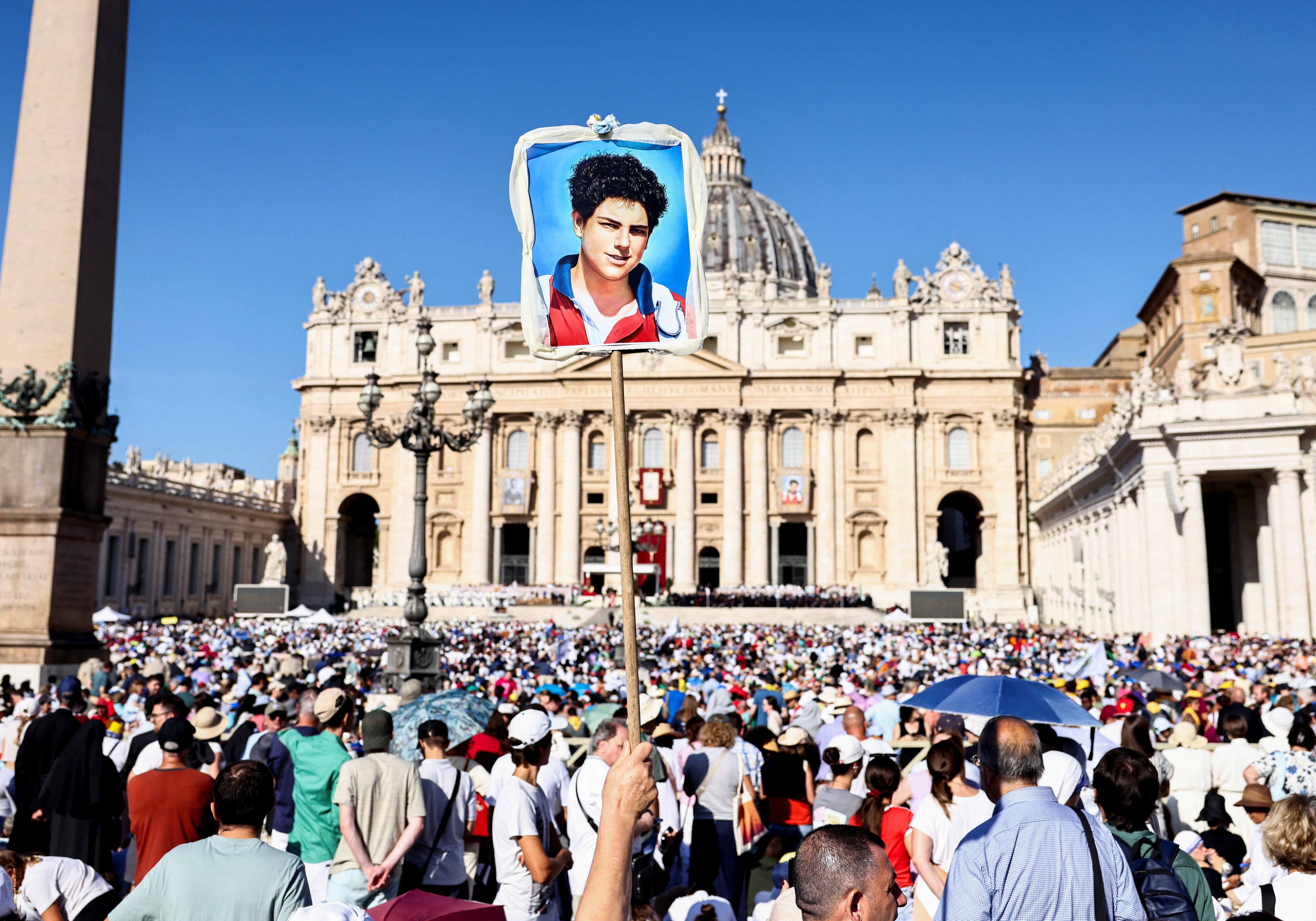April 6, 2018 at 1:53 p.m.
Enrichment programs benefit all involved
Adding a full 40-minute period to the school day, as St. Mary's began doing in September, has significantly enriched the quality of education at the school, according to Principal Sister Patricia Lynch.
"We're seeing great results with our new extended day enrichment program. The kids love it, the parents love it, and, in spite of the extra work involved, the teachers love it because they see such progress. When kids get excited about learning -- that's what puts a light in a teacher's eyes!" exclaims Sister Patricia.
Beneficiaries
But it's not just the immediate school family that is benefitting from the new arrangement: One recent enrichment endeavor entailed collecting items that cannot be purchased with food stamps and cataloguing them for distribution to needy members of the community.Sister Patricia readily admits she is relieved that the response has been so positive and that the program is already having a ripple effect that is enriching lives beyond the classroom.
"When our school board first began talking about the possibility of lengthening the day, there were some concerns that the children might get tired or bored," she said. "One of the options we had was to simply add five minutes to each period, but we agreed that breaking up the 40 minutes designated for enrichment wasn't the answer. The extra minutes could too easily get absorbed into the regular school day rather than being treated as something very special."
Gift of time
Setting the full 40 minutes aside as a single block for enrichment purposes has truly made the extra period seem like a gift of time.At this time last year, classes at St. Mary's didn't officially begin until shortly after 9 a.m. and ended at 3 p.m. This year, attendance is taken at 8:25 a.m. -- which, of course, means the bells and buzzers on alarm clocks in the homes of students and teachers are also sounding almost an hour earlier.
In spite of this, Sister Patricia contends, signs of sleep deprivation do not abound at the start of the school day. "By scheduling the enrichment programs for the younger students to begin first thing in the morning, the little ones arrive eager begin the day's work. They really seem to look forward to these sessions."
Younger students (grades K-4) are not required to participate in the early morning enrichment program, but only a small handful have declined. "The extra period is only mandatory for Grades 5-8," says Sister Patricia, noting that enrichment programs for the older students take place at the end of the day from 2:20 to 3 p.m.
Themes for year
St. Mary's 1999-2000 Enrichment Program is divided into monthly themes: community (September), continents (October), immigration (November), millennium (December), astronomy (January), Black history (February), humanitarianism or women's history (March), environment (April), family (May), and art (June).Each theme incorporates components from five key subjects: religion, language arts, math, science and social studies.
During Community Month in September, students initiated a special outreach project called "Mary's Secret Closet" that culminated with a weekend Making A Difference celebration.
"The kids came up with the idea of collecting items that cannot be purchased with food stamps and storing them in an old supply space they named Mary's Secret Closet," explains Sister Patricia.
"Many of the students were surprised to learn that some essentials -- like toilet paper, toothpaste and soap -- couldn't be secured with food stamps, and they wanted to make a positive difference in the lives of the people who needed these things," she noted.
The students were especially moved by a $1,000 cash donation received from the WalMart store in East Greenbush, which helped to make their project an even greater success.
Around the world
The October enrichment program on the continents for Grades 5-8 combined input from teachers Joanne Fredericks (language arts), Michael O'Brien (math), Irina Clark (religion), Linda Haaf (science) and Robert Field (social studies).Ms. Fredericks challenged students to compare similarities and differences between the United States and nations selected by individual learners. This portion of the program involved researching and reporting on current events and their impact on the lives of those living in foreign countries around the world.
Students were then assigned to make graphs -- with tied in with Mr. O'Brien's math unit on diagraming. Mr. Field's lessons got some religious reinforcement when Ms. Clark had students secure computer-generated maps dating back to biblical times, when the Roman Empire was flourishing, to be contrasted with contemporary maps of the same areas.
Mrs. Haaf, meanwhile, showed science students videos about the theory of continental movement and had them use computers to further probe the topic.
(11-04-99)
[[In-content Ad]]
- New report explores link between religious freedom violations and mass atrocities
- Appeals court allows Planned Parenthood defunding to proceed, for now
- Arizona Catholics hold rosary vigil for Charlie Kirk
- Trump marks 9/11 anniversary at Pentagon ceremony amid gloom of Charlie Kirk killing
- Augustinians elect Philadelphia-area native as new prior general
- Calls from pope to Gaza church bring ‘great joy,’ says parish priest
- Supreme Court temporarily allows Trump administration to hold up billions in foreign aid
- ‘Miracle girl’: Baltimore native’s childhood cure from leukemia helped canonize America’s first saint 50 years ago
- Catholic delegation went to Holy Land as ‘pilgrims of hope,’ says Baltimore archbishop
- Oldest organ in Christendom sounded for first time in 800 years, leaving organist speechless







Comments:
You must login to comment.